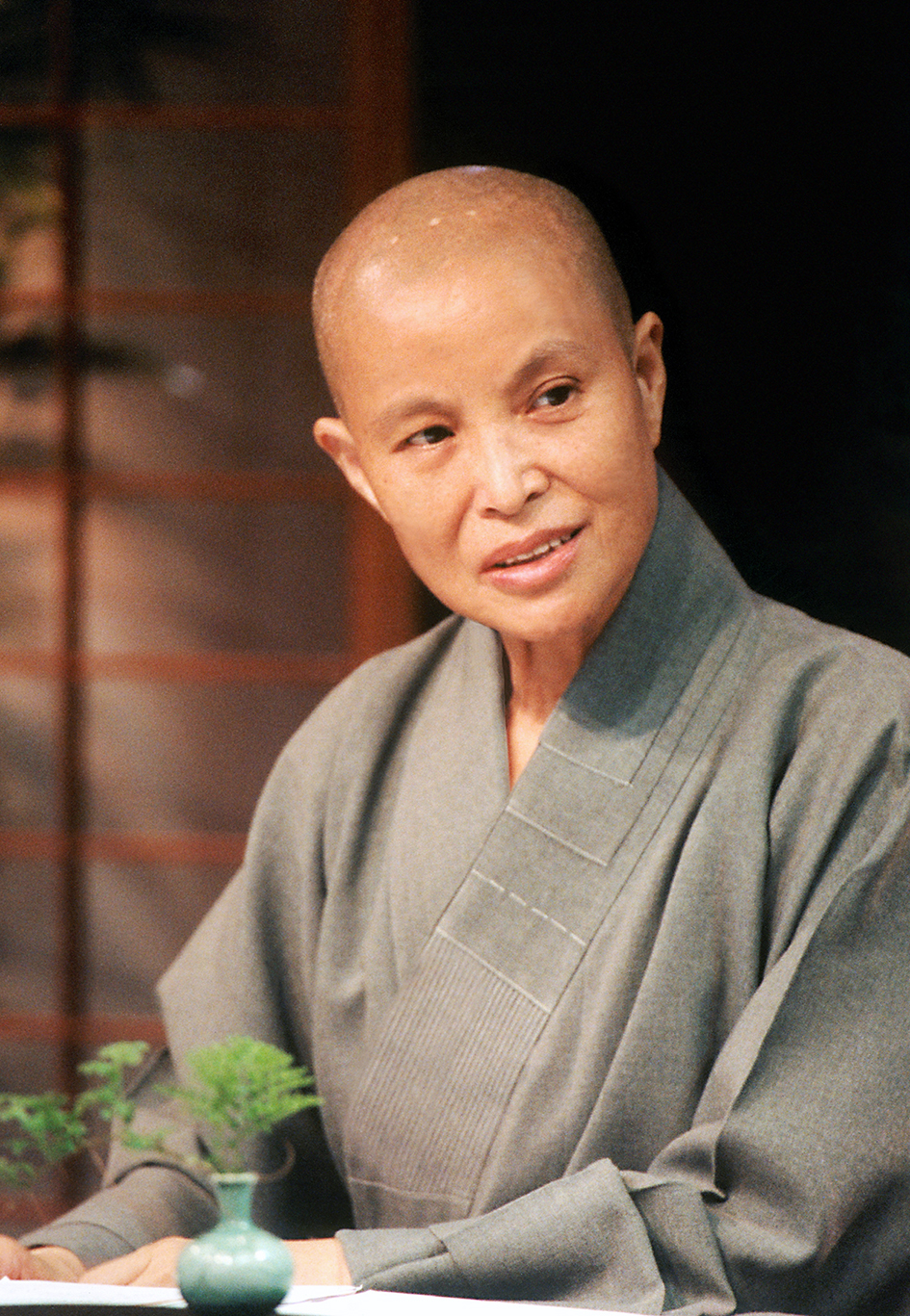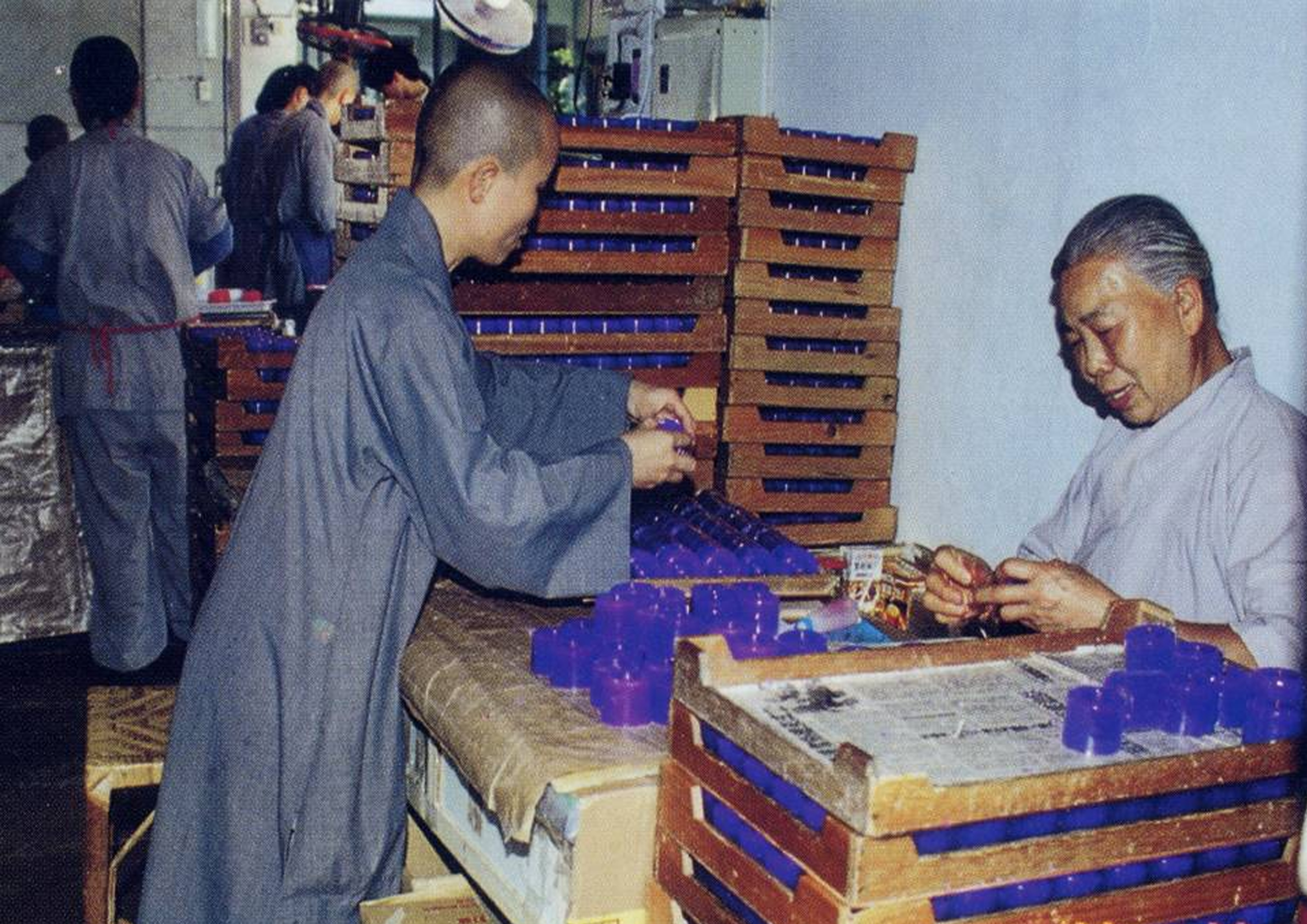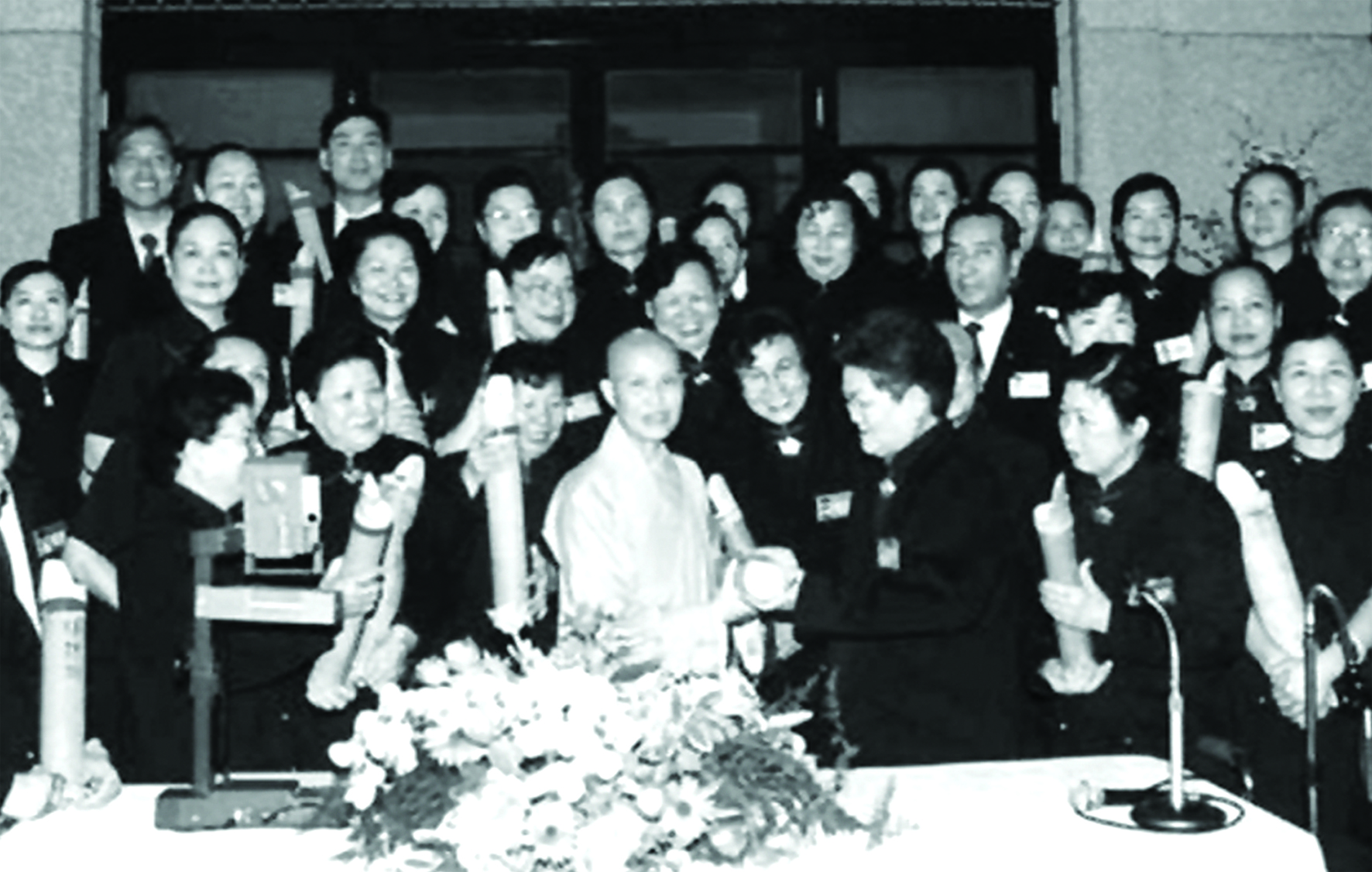Master Cheng Yen

Master Cheng Yen was born Wang Chin-yun (bright cloud) on 1937, in a small town in central Taiwan. At the age of just 11 months, she was adopted by her uncle and aunt. Chin-yun was a bright and diligent girl much doted on by her adoptive parents. Being the eldest daughter in the family, she began helping to look after her younger siblings when she was barely a child herself.
When Ching-yun was around seven years old, she experienced the air raids that the Second World War brought upon the then Japanese-occupied Taiwan, and the cruelties of war deeply imprinted on her young mind. Throughout her growing years, she had many questions about life and its meaning.
Becoming a Buddhist Nun
In 1952, when Chin-yun was 15, her mother suffered from a stomach ulcer that required surgery, which was a potentially life-threatening procedure in those days. Deeply concerned about her mother’s health, the filial daughter began praying to Avalokitesvara (Guan Yin Bodhisattva) for her mother's recovery. Ching-Yun pledging to become a vegetarian for the rest of her life if her mother recovered. Her mother eventually recovered without undergoing an operation, and Chin-yun faithfully fulfilled her vow.
In her late teens, Chin-yun started helping her father with managing his business. In 1960, an event happened that would change the course of her life. Her father suddenly suffered a brain hemorrhage in his office, and passed away the very next day. The shock and trauma of her beloved father’s death marked a turning point in her life. She began to search for the truths behind life and death, and often visited a Buddhist temple in her hometown to study the Buddhist sutras and to seek the answers to her questions.
Inspired and moved by the insights of Buddhism, Chin-yun realised that she could only find true happiness in life when she expanded the love she had for her family to all of humanity. She felt strongly that instead of merely taking care of her one small family, she should work for the good of all people.
At the age of 24, Chin-yun left her relatively comfortable home to begin a journey of greater purpose ─ to pursue a monastic life (spiritual). In 1962, she arrived in Hualien, an impoverished rural town in the east coast of Taiwan, and took residence in Pu Ming Temple, living a spartan life as she devoted herself to the study of Buddhism. In autumn that year, she shaved her own head, determined to become a Buddhist nun.

In February 1963, Chin-yun travelled to a temple in Taipei to attend an initiation ceremony for those entering Buddhist monastic life. Ching-Yun only to be told that she could not be ordained as she did not have a refuge master. Then, by chance, she met Venerable Master Yin Shun, a prominent monk and scholar in contemporary Chinese Buddhism, and took refuge under him. The Venerable Master Ying Sun said to her: “Karmic affinities have brought us together. Now that you have become a monastic, you must always remember to work for the good of Buddhism and all living beings.” He gave her the Dharma name, “Cheng Yen”, and she was thus able to undergo ordination in the temple.
After returning to Pu Ming Temple in Hualien, Master Cheng Yen started reciting and studying the Lotus Sutra in a small wooden hut located behind the temple. As she refused to accept any offerings from the laity, life was extremely difficult.
In October 1963, the Master moved to Tzu Shan Temple in Hualien, where she taught the Sutra of the Past Vows of Ksitigarbha Bodhisattva for about eight months. Her teachings were very popular among the local residents and a few young women were inspired to become her monastic disciples. Then, she moved back to the little wooden hut behind the Pu Ming Temple with her disciples.

Master Cheng Yen personally established the rules for daily living for her monastic community, and one of them was to be self-reliant. Instead of accepting offerings from the laity, the nuns earned a meager living from farm labour, knitting sweaters, and making baby shoes, bags and other handicraft items for sale. Even till this day, this rule is strictly adhered to at the Jing Si Abode, the residence of Master Cheng Yen and her monastic disciples.
The Origin of Tzu Chi

One day in 1966, Master Cheng Yen went to visit a patient at a clinic. As she was leaving, she noticed a pool of blood on the floor. Upon hearing someone tell her that the blood was from an aboriginal woman who suffered from labour complications, but had to be sent home as her family could not afford the required fee, the Master was besieged with grief. Feeling deeply for the woman’s plight, the Master asked herself what she could do to help the poor and needy. Not long after that incident, three Catholic nuns from a local Catholic school paid her a visit. During their conversation, the nuns spoke of the charitable work the Catholics had done for the impoverished and destitute and commented why Buddhists were seldom seen contributing to society. The nuns’ words struck a deep chord with the Master.
These two incidents spurred Master Cheng Yen to set up a charity to help the poor and sick. Thus in May 1966, she set up Tzu Chi in Hualien, with the support and assistance of her monastic disciples, and 30 lay followers, most of whom were local housewives.
Humble Beginnings ─ Starting from Scratch

Though living a simple and austere lifestyle themselves, Master Cheng Yen and her disciples were determined to help the poor. To raise funds for their charity mission, she asked her 30 lay followers to set aside 50 NT cents (S$0.02) from their grocery money each day and save it in a bamboo coin bank. One follower thought that it would be easier to just donate NT$15 every month. But the Master said although the amount was the same, the meaning behind it was very different. She hoped that everyone could give rise to a kind thought of helping others every day, and not just one day a month. If everyone could do this, it would benefit many people in the world. Word of the campaign soon spread from the market to other parts of Hualien, and more and more people participated.
At the time, many followers sought to take refuge with Master Cheng Yen. In order to let Tzu Chi grow, the Master established the rule that those taking refuge must become donating members and also serve as volunteers to work to relieve the poor and suffering. Gradually, the committed volunteers joined the ranks of Tzu Chi commissioners, who would travel to the homes of the donating members, to personally collect their donations. On one occasion, a commissioner complained that a particular donor lived so far away that the cost of the trip was higher than the amount donated. Master Cheng Yen, however, replied that giving people an opportunity to participate in a good cause was just as important as the donation itself. By personally collecting donations from people, the commissioners were in fact nurturing the seed of love in every donor. Inspiring love in people’s hearts is, in fact, the Master’s true goal.
By the end of 1967, the number of donating members had increased to 300, and the charity needed a larger space for its expanding operations. Master Cheng Yen’s mother donated NT$200,000 (S$8,800), which enabled Tzu Chi to build the first building of the Jing Si Abode. The Abode has since expanded and become the spiritual home of Tzu Chi members worldwide.
The Master firmly believes that everyone is capable of living their lives with the same great compassion as the Buddha. True compassion, however, is not just about having sympathy for the suffering of others; it is to reach out to relieve that suffering through action. In founding Tzu Chi, Master Cheng Yen wishes to give everyone the opportunity to live out this compassion, so as to create a cycle of love and kindness around the world.








 Sitemap
Sitemap